
CHM 101 VOL 1 2014 >IC<
17th Edition
ISBN: 9781269932905
Author: Pearson
Publisher: PEARSON C
expand_more
expand_more
format_list_bulleted
Textbook Question
Chapter 15, Problem 37E
A mixture of 0.2000 mol of CO2, 0.1000 mol of H2, and 0.1600 mol of H2O is placed in a 2.000-L vessel. The following equilibrium is established at 500 K.
CO2(g) + H2(g) ⇌ CO (g) + H2O(g)
- Calculate the initial partial pressures of CO2, H2, and H2O.
- At equilibrium PH2O = 3.51 atm. Calculate the equilibrium partial pressures of CO2, H2, and CO.
- Calculate Kp for the reaction.
- Calculate KC for the reaction
Expert Solution & Answer
Trending nowThis is a popular solution!

Students have asked these similar questions
Come and compare the Bronsted-Bjerrum calculation, the Debye and Hückel calculation, and the Davies calculation.
plz watch the youtube video (the title of this topic) by roxi H. she explains it step by step but i get the wrong answer
Writing the rate law implied by a simple mechanism
To exit full screen, press and hold esc
Suppose the decomposition of ozone proceeds by the following mechanism:
step
elementary reaction
rate constant
1
→>>
O3(9) O2(g) + O(g)
k₁
2
03(g) + O(g)
→
202(g)
k2
Suppose also k₁ »k2. That is, the first step is much faster than the second.
Write the balanced
chemical equation for the
overall chemical reaction:
Write the experimentally-
observable rate law for the
overall chemical reaction.
☐
rate
=
☐
Note: your answer should
not contain the
concentrations of any
intermediates.
Express the rate constant
k for the overall chemical
reaction in terms of K1, K2,
and (if necessary) the rate
constants k-1 and K-2 for
the reverse of the two
elementary reactions in
the mechanism.
k =
☐
000
18
ローロ
Ar
OO
Chapter 15 Solutions
CHM 101 VOL 1 2014 >IC<
Ch. 15.2 - Prob. 15.1.1PECh. 15.2 - Prob. 15.1.2PECh. 15.2 - Prob. 15.2.1PECh. 15.2 - Prob. 15.2.2PECh. 15.3 - Prob. 15.3.1PECh. 15.3 - Practice Exercise 2 For the reaction H2 (g) + I2...Ch. 15.3 - Prob. 15.4.1PECh. 15.3 - Prob. 15.4.2PECh. 15.4 - Prob. 15.5.1PECh. 15.4 - Prob. 15.5.2PE
Ch. 15.4 - Practice Exercise 1
If 8.0 g of NH4HS(s)...Ch. 15.4 - Prob. 15.6.2PECh. 15.5 - Practice Exercise 1
A mixture of gaseous sulfur...Ch. 15.5 - Prob. 15.7.2PECh. 15.5 - Practice Exercise 1 In Section 15.1, we discussed...Ch. 15.5 - Practice Exercise 2
The gaseous compound BrCl...Ch. 15.6 - Prob. 15.9.1PECh. 15.6 - Practice Exercise 2 At 1000 k, the value of Kp for...Ch. 15.6 - Prob. 15.10.1PECh. 15.6 - Prob. 15.10.2PECh. 15.6 - Practice Exercise 1 For the equilibrium Br2(g) +...Ch. 15.6 - Prob. 15.11.2PECh. 15.7 - Practice Exercise 1 For the reaction 4 NH3(g) + 5...Ch. 15.7 - Prob. 15.12.2PECh. 15 - Prob. 1DECh. 15 - Based on the following energy profile, predict...Ch. 15 - 15.2 The following diagrams represent a...Ch. 15 - Prob. 3ECh. 15 - Prob. 4ECh. 15 - Prob. 5ECh. 15 - 15.6 Ethene (C2H4) reacts with healogens (X2) by...Ch. 15 - When lead(IV) oxide is heated above 300 O C, it...Ch. 15 - Prob. 8ECh. 15 - The reactin A2(g) + B(g) + A(g) + AB(g) has an...Ch. 15 - Prob. 10ECh. 15 - Prob. 11ECh. 15 - The following graph represents the yield of the...Ch. 15 - Suppose that the gas-phase reactions A B and B A...Ch. 15 - Prob. 14ECh. 15 - Prob. 15ECh. 15 - Write the expression for KC for the following...Ch. 15 - When the following reaction come to equilibrium,...Ch. 15 - Prob. 18ECh. 15 - Prob. 19ECh. 15 - Prob. 20ECh. 15 - If Kc = 0.042 for PC13(g) + C12 (g) PC15 (g) at...Ch. 15 - Prob. 22ECh. 15 - 15.23 The equilibrium constant for the...Ch. 15 - Prob. 24ECh. 15 - Prob. 25ECh. 15 - Prob. 26ECh. 15 - The following equilibria were attained at 823 K:...Ch. 15 - Consider the equilibrium N2(g) + O2(g) + Br2(g) 2...Ch. 15 - Mercury(I) oxide decomposes into elemental mercury...Ch. 15 - Prob. 30ECh. 15 - Prob. 31ECh. 15 - Prob. 32ECh. 15 - Prob. 33ECh. 15 - Phosphorus trichloride gas and chlorine gas react...Ch. 15 - A mixture of 0.10 mol of NO, 0.050 mol of H2, and...Ch. 15 - Prob. 36ECh. 15 - A mixture of 0.2000 mol of CO2, 0.1000 mol of H2,...Ch. 15 - 15.38 A flask is charged with 1.500 atm of N2O4(g)...Ch. 15 - Prob. 39ECh. 15 - Prob. 40ECh. 15 - a. If QC KC, in which direction will a reaction...Ch. 15 - Prob. 42ECh. 15 - At 100 OC , the equilibrium constant for the...Ch. 15 - 15.44 As shown in Table 15.2, KP for the...Ch. 15 - At 100 C, K = 0.078 for the reaction SO2Cl2 (g) ...Ch. 15 - Prob. 46ECh. 15 - Prob. 47ECh. 15 - Prob. 48ECh. 15 - At 800 k, the equilibrium constant for I2 (g) ...Ch. 15 - Prob. 50ECh. 15 - At 2000 OC, the equilibrium constant for the...Ch. 15 - For the equilibrium Br2 (g) + Cl2 (g) 2BrCl(g) At...Ch. 15 - At 373 k, Kp = 0.416 for the equilibrium 2NOBr (g)...Ch. 15 - At 218 oC, KC= 1.2 X 10-4 for the equilibrium NH4...Ch. 15 - Prob. 55ECh. 15 - At 80 oC, K =1.87 X 10-3 for the reaction PH3 BCl3...Ch. 15 - Prob. 57ECh. 15 - Prob. 58ECh. 15 - Prob. 59ECh. 15 - Prob. 60ECh. 15 - Consider the following equilibrium for which H<0...Ch. 15 - Prob. 62ECh. 15 - 15.63 How do the following changes affect the...Ch. 15 - Prob. 64ECh. 15 - Consider the following equilibrium between oxides...Ch. 15 - Prob. 66ECh. 15 - Ozone, O3, decomposes to molecular oxygen in the...Ch. 15 - Prob. 68ECh. 15 - Prob. 69ECh. 15 - 15.70 True or false: When the temperature of an...Ch. 15 - Prob. 71AECh. 15 - Prob. 72AECh. 15 - 15.73 A mixture of CH4 and H2O is passed over a...Ch. 15 - Prob. 74AECh. 15 - Prob. 75AECh. 15 - Prob. 76AECh. 15 - Prob. 77AECh. 15 - Prob. 78AECh. 15 - Prob. 79AECh. 15 - For the equilibrium PH3BCI3 (s) PH3 (g) + BCI3...Ch. 15 - Prob. 81AECh. 15 - Prob. 82AECh. 15 - Prob. 83AECh. 15 - At 900 o C, Kc = 0.0108 for the reaction CaCO3(g) ...Ch. 15 - Prob. 85AECh. 15 - The equilibrium constant Kc for C(s) +CO2 2CO(g)...Ch. 15 - Prob. 87AECh. 15 - Le Chatelier noted that many industrial processes...Ch. 15 - Prob. 89AECh. 15 - Prob. 90AECh. 15 - [15.91] An equilibrium mixture of H2, I2, and HI...Ch. 15 - Consider the hypothetical reaction A(g) + 2B(g) 2...Ch. 15 - Prob. 93AECh. 15 - Prob. 94AECh. 15 - Prob. 95IECh. 15 - The following equilibria were measured at 823 K:...Ch. 15 - Prob. 97IECh. 15 - Prob. 98IECh. 15 - At 800 K, the equilibrium constant for the...Ch. 15 - Prob. 100IECh. 15 - Prob. 101IECh. 15 - Prob. 102IE
Knowledge Booster
Learn more about
Need a deep-dive on the concept behind this application? Look no further. Learn more about this topic, chemistry and related others by exploring similar questions and additional content below.Similar questions
- Deducing a rate law from the change in concentration over time To exit full screen, press and hold esc A chemistry graduate student is studying the rate of this reaction: H2CO3(aq) → H₂O(aq) +CO₂ (aq) - She fills a reaction vessel with H2CO3 and measures its concentration as the reaction proceeds: time (milliseconds) [H2CO3] 0 0.0500 M 10. 0.0266M 20. 0.0181 M 30. 0.0138M 40. 0.0111 M Use this data to answer the following questions. Write the rate law for this reaction. Calculate the value of the rate constant k. Round your answer to 2 significant digits. Also be sure your answer has the correct unit symbol. rate ☐ x10 k = Х 000 18 Ararrow_forwardWriting the rate law implied by a simple mechanism Suppose the formation of tert-butanol proceeds by the following mechanism: step elementary reaction 1 (CH3)3 CBr(aq) → (CH3)2 C* (aq) + Br (aq) 2 (CH3)2C (aq) + OH¯ (aq) → (CH3)2COH(aq) rate constant k₁ k₂ Suppose also k₁ »k2. That is, the first step is much faster than the second. Write the balanced chemical equation for the overall chemical reaction: Write the experimentally- observable rate law for the overall chemical reaction. Note: your answer should not contain the concentrations of any intermediates. rate = k ☐ Express the rate constant k for the overall chemical reaction in terms of K1, K2, and (if necessary) the rate constants k-1 and K-2 for the reverse of the two elementary reactions in the mechanism. k = ☐ □ ☑ G ? 00. 18 Ar Barrow_forwardDeducing a rate law from the change in concentration over time A chemistry graduate student is studying the rate of this reaction: 2SO3 (g) →>> 2SO2 (g) + O2(g) He fills a reaction vessel with SO3 and measures its concentration as the reaction proceeds: ? time (minutes) [SO3] 0 0.0200M 1.0 0.0105 M 2.0 0.00552M 3.0 0.00290M 4.0 0.00152M Use this data to answer the following questions. Write the rate law for this reaction. rate = k ☐ x10 Calculate the value of the rate constant k. Round your answer to 2 significant digits. Also be sure your answer has the correct unit symbol. k = ☐ Х 000 18 Ar BAarrow_forward
- Using the Arrhenius equation to calculate k at one temperature from k at... The rate constant of a certain reaction is known to obey the Arrhenius equation, and to have an activation energy E reaction is 1.2 × 107 M −1 .S at 160.0 °C, what will the rate constant be at 194.0 °C? Round your answer to 2 significant digits. k = Шм −1 -1 .S ☐ x10 ☑ 5 = = 16.0 kJ/mol. If the rate constant of this a ? olo Ar Barrow_forwardUsing the Arrhenius equation to calculate k at one temperature from k at... a The rate constant of a certain reaction is known to obey the Arrhenius equation, and to have an activation energy E = 10.0 kJ/mol. If the rate constant of this reaction is 9.9 × 107 M -1 .S at 246.0 °C, what will the rate constant be at 196.0 °C? Round your answer to 2 significant digits. k = ☐ M -1 −1 .S x10 ☑ ? 00. 18 Ar Barrow_forwardWriting the rate law implied by a simple mechanism Suppose the reaction between nitric oxide and bromine proceeds by the following mechanism: elementary reaction - NO(g) + Br2(g) → NOBг2(g) step 1 2 NOBг2(g) + NO(g) - rate constant k₁ 2 NOBr(g) k2 Suppose also k₁ »k2. That is, the first step is much faster than the second. Write the balanced chemical equation for the overall chemical reaction: Write the experimentally- observable rate law for the overall chemical reaction. Note: your answer should not contain the concentrations of any intermediates. ☐ rate = k Express the rate constant k for the overall chemical reaction in terms of k₁, k2, and (if necessary) the rate constants k-1 and K-2 for the reverse of the two elementary reactions in the mechanism. = ☐ ロ→ロ Х ك ? 000 18 Ararrow_forward
- Deducing a rate law from the change in concentration over time chemistry graduate student is studying the rate of this reaction: 2H3PO4 (aq) → P₂O5 (aq) +3H₂O (aq) 2 e fills a reaction vessel with H3PO and measures its concentration as the reaction proceeds: 4 time (seconds) [H3PO4] 0 0.500M 1.0 0.229 M 2.0 0.148M 3.0 0.110M 4.0 0.0871 M se this data to answer the following questions. Write the rate law for this reaction. rate = k x10 Calculate the value of the rate constant k. k = Round your answer to 2 significant digits. Also be sure your answer has the correct unit symbol. ☑ G olo 18 Ararrow_forwardWriting the rate law implied by a simple mechanism Suppose the formation of nitrosyl chloride proceeds by the following mechanism: elementary reaction step rate constant 1 NO(g) + Cl2(g) → NOC₁₂(g) k₁ 2 NOCl2(g) + NO(g) 2 NOCl(g) →>> k2 Suppose also k₁ »k. That is, the first step is much faster than the second. Write the balanced chemical equation for the overall chemical reaction: Write the experimentally- observable rate law for the overall chemical reaction. rate = k ☐ Note: your answer should not contain the concentrations of any intermediates. Express the rate constant k for the overall chemical reaction in terms of K1, K2, and (if necessary) the rate constants k-1 and K-2 for the reverse of the two elementary reactions in the mechanism. k = | Х ? 18 Ararrow_forwardUsing first- and second-order integrated rate laws 1/5 Consider this reaction: H2CO3(aq) → H₂O (aq) +CO₂ (aq) At a certain temperature it obeys this rate law. rate = (2.27 s¹) [H2CO3] Suppose a vessel contains H2CO3 at a concentration of 0.830M. Calculate how long it takes for the concentration of H2CO3 to decrease by 83.0%. You may assume no other reaction is important. Round your answer to 2 significant digits. S x10 ☑ § ? 00. 18 Ararrow_forward
- Using the Arrhenius equation to calculate k at one temperature from k at... Try Again Your answer is incorrect. 0/5 a The rate constant of a certain reaction is known to obey the Arrhenius equation, and to have an activation energy E = 28.0 kJ/mol. If the rate constant of this -1 -1 reaction is 2.5 × 10³ M ·S at 45.0 °C, what will the rate constant be at 104.0 °C? Round your answer to 2 significant digits. ST -1 -1 ☐ x10 k = 2.8 × 10 - M .S 18 Ararrow_forwardIn the theory of the state of transition, indicate the expression of the constant k in function of deltaE0#. This expression is also the ecuation of Arrhenius?arrow_forwardBriefly indicate the differences between Ea of the theory of collisions and E0# the theory of the state of transition.arrow_forward
arrow_back_ios
SEE MORE QUESTIONS
arrow_forward_ios
Recommended textbooks for you
 Chemistry: The Molecular ScienceChemistryISBN:9781285199047Author:John W. Moore, Conrad L. StanitskiPublisher:Cengage Learning
Chemistry: The Molecular ScienceChemistryISBN:9781285199047Author:John W. Moore, Conrad L. StanitskiPublisher:Cengage Learning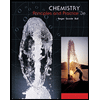 Chemistry: Principles and PracticeChemistryISBN:9780534420123Author:Daniel L. Reger, Scott R. Goode, David W. Ball, Edward MercerPublisher:Cengage Learning
Chemistry: Principles and PracticeChemistryISBN:9780534420123Author:Daniel L. Reger, Scott R. Goode, David W. Ball, Edward MercerPublisher:Cengage Learning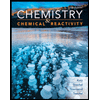 Chemistry & Chemical ReactivityChemistryISBN:9781337399074Author:John C. Kotz, Paul M. Treichel, John Townsend, David TreichelPublisher:Cengage Learning
Chemistry & Chemical ReactivityChemistryISBN:9781337399074Author:John C. Kotz, Paul M. Treichel, John Townsend, David TreichelPublisher:Cengage Learning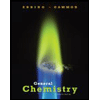 General Chemistry - Standalone book (MindTap Cour...ChemistryISBN:9781305580343Author:Steven D. Gammon, Ebbing, Darrell Ebbing, Steven D., Darrell; Gammon, Darrell Ebbing; Steven D. Gammon, Darrell D.; Gammon, Ebbing; Steven D. Gammon; DarrellPublisher:Cengage Learning
General Chemistry - Standalone book (MindTap Cour...ChemistryISBN:9781305580343Author:Steven D. Gammon, Ebbing, Darrell Ebbing, Steven D., Darrell; Gammon, Darrell Ebbing; Steven D. Gammon, Darrell D.; Gammon, Ebbing; Steven D. Gammon; DarrellPublisher:Cengage Learning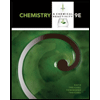 Chemistry & Chemical ReactivityChemistryISBN:9781133949640Author:John C. Kotz, Paul M. Treichel, John Townsend, David TreichelPublisher:Cengage Learning
Chemistry & Chemical ReactivityChemistryISBN:9781133949640Author:John C. Kotz, Paul M. Treichel, John Townsend, David TreichelPublisher:Cengage Learning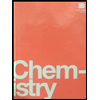 Chemistry by OpenStax (2015-05-04)ChemistryISBN:9781938168390Author:Klaus Theopold, Richard H Langley, Paul Flowers, William R. Robinson, Mark BlaserPublisher:OpenStax
Chemistry by OpenStax (2015-05-04)ChemistryISBN:9781938168390Author:Klaus Theopold, Richard H Langley, Paul Flowers, William R. Robinson, Mark BlaserPublisher:OpenStax

Chemistry: The Molecular Science
Chemistry
ISBN:9781285199047
Author:John W. Moore, Conrad L. Stanitski
Publisher:Cengage Learning

Chemistry: Principles and Practice
Chemistry
ISBN:9780534420123
Author:Daniel L. Reger, Scott R. Goode, David W. Ball, Edward Mercer
Publisher:Cengage Learning

Chemistry & Chemical Reactivity
Chemistry
ISBN:9781337399074
Author:John C. Kotz, Paul M. Treichel, John Townsend, David Treichel
Publisher:Cengage Learning

General Chemistry - Standalone book (MindTap Cour...
Chemistry
ISBN:9781305580343
Author:Steven D. Gammon, Ebbing, Darrell Ebbing, Steven D., Darrell; Gammon, Darrell Ebbing; Steven D. Gammon, Darrell D.; Gammon, Ebbing; Steven D. Gammon; Darrell
Publisher:Cengage Learning

Chemistry & Chemical Reactivity
Chemistry
ISBN:9781133949640
Author:John C. Kotz, Paul M. Treichel, John Townsend, David Treichel
Publisher:Cengage Learning

Chemistry by OpenStax (2015-05-04)
Chemistry
ISBN:9781938168390
Author:Klaus Theopold, Richard H Langley, Paul Flowers, William R. Robinson, Mark Blaser
Publisher:OpenStax
Chemical Equilibria and Reaction Quotients; Author: Professor Dave Explains;https://www.youtube.com/watch?v=1GiZzCzmO5Q;License: Standard YouTube License, CC-BY